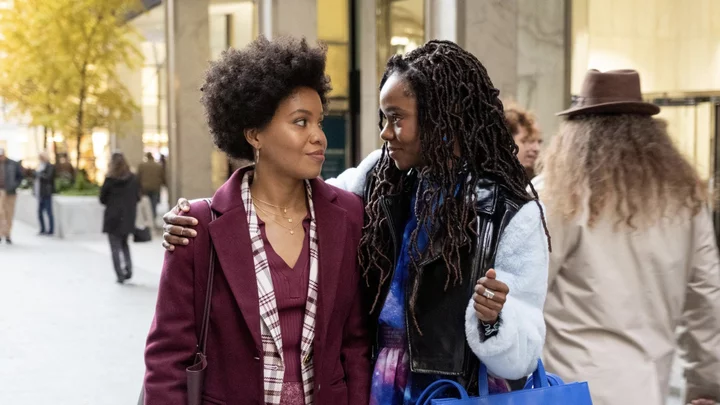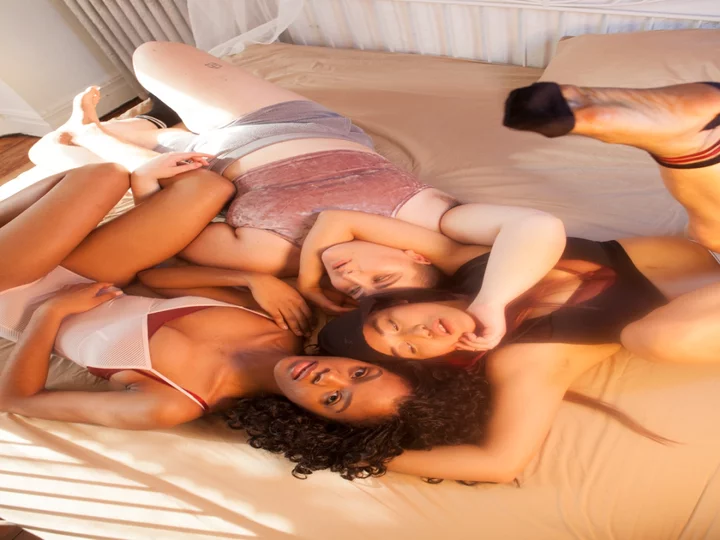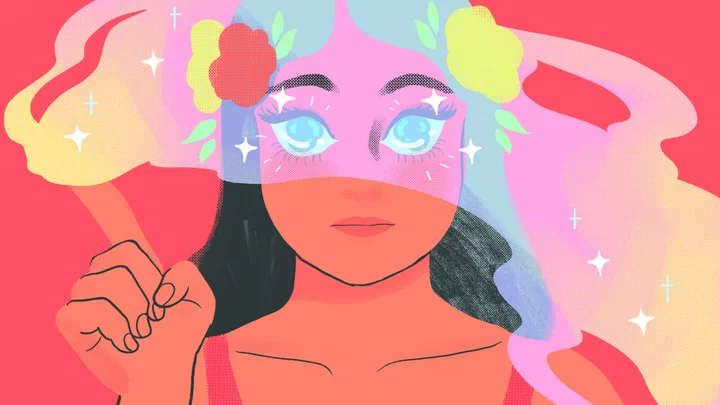Right from the jump, The Other Black Girl wants you to know that the workplace is a nightmare.
Hulu's new series, based on the novel by Zakiya Dalila Harris, opens in the 1980s at the offices of Wagner Books. The company's first Black editor, Kendra Rae Phillips (Cassi Maddox), is leaving for the day, not with the calm fatigue of someone ready to go home, but with the frantic worry of someone being pursued. She throws worried glances around her subway car, scratches her scalp hard enough to draw blood, and screams as the subway's white passengers bear menacingly down on her.
SEE ALSO: 31 shows we can't wait to see this fallIt's a classic hook straight out of a slasher, and as the show cuts to the present — and to current-day Wagner editorial assistant Nella Rogers (Sinclair Daniel) — we get the harrowing sense that history is about to repeat itself.
What is The Other Black Girl about?
Sinclair Daniel in "The Other Black Girl." Credit: Wilford Harwood / HuluWhile Nella is not struggling with whatever horror show Kendra was dealing with, she is certainly no stranger to the banal horrors of office life. Already overworked and underpaid, her life is made infinitely harder by the fact that she is the only Black employee at Wagner. Microaggressions abound, as do cringe-worthy attempts at allyship from her white co-workers.
Given these extra stressors, Nella is overjoyed when Wagner hires Hazel-May McCall (Ashleigh Murray), another Black woman, as an editorial assistant. In Hazel, she sees the possibility of a true workplace confidant and friend. But while the two hit it off initially, their relationship sours as Hazel's star at Wagner rises, sometimes at the expense of Nella. What started as camaraderie threatens to devolve into outright competition. But is this Hazel-led sabotage? Or is something more sinister afoot?
SEE ALSO: ‘Dreaming Whilst Black’ review: A sharp critique of systemic obstacles still blocking Black filmmakersLuckily, the answer to these questions is not as reductive as The Other Black Girl pitting two Black women against each other in an isolated face-off. Instead, the show interrogates the systems that make Nella feel as if there can only be one Black woman in a place such as Wagner. As it does so, it also walks the line between workplace satire and horror thriller, creating a fun genre mash-up that, while not always successful, proves endlessly entertaining.
The Other Black Girl mixes and matches genres, with (mostly) effective results.
Ashleigh Murray in "The Other Black Girl." Credit: Wilford Harwood / HuluDespite kicking off on a distinctly horror-tinged beat, The Other Black Girl spends much of its first few episodes entrenched in its send-up of corporate America — especially the publishing industry. Wagner Books staff, like head Richard Wagner (Eric McCormack) and editor Vera (Bellamy Young), claim they want to support "diverse" voices, yet they belittle and ignore Nella when she tries to put her own ideas forward.
Most infuriating is Vera's devotion to insufferable author Colin (Brian Baumgartner), whose upcoming novel features a problematic Black woman character named Shartricia. As Nella tries (unsuccessfully) to caution Vera about these issues, we see her calculate in real time how best to broach the subject without overstepping any boundaries that may hinder her already extremely difficult upward progress in publishing. Scenes where Vera talks down to Nella and dismisses her experience are just as stomach-churning as any of the horror The Other Black Girl can conjure up — often even more so. That these problems echo throughout the past, including in flashbacks involving Kendra Rae and her best friend and star author Diana Gordon (Shakirah DeMesier), reminds us of the enduring presence of racism and misogynoir throughout the workplace.
Nothing can really be more horrifying than the real-world systemic racism Nella faces, but The Other Black Girl weaves more traditional horror elements throughout Nella's publishing struggles nonetheless. The bland backdrop of the Wagner offices allows for some pretty effective scares, including a never-ending loop of the same hallway, jump scares triggered by harsh motion sensor lights, and strange blurry figures seemingly trapped within Nella's computer monitor. The surreal office imagery and interrogation of workplace culture makes The Other Black Girl a fascinating companion show to Severance, although that's where the similarities end.
Unfortunately, all these thrills and chills lead to a less-than-satisfying reveal about the truth behind Wagner. As the pieces fall into place, it doesn't seem like The Other Black Girl has earned a twist. Rather, it seems like the show felt it had to include one in order to stand out.
Even as these twists threaten to unravel the plot, The Other Black Girl's genre playfulness and committed cast help it stick its landing. Daniel makes for an excellent anchor for the story, nailing Nella's publishing aspirations and "stick it out" attitude, as well as her growing suspicions of Hazel, whom Murray plays with a pointed slipperiness. Their scenes together seesaw between certainty and doubt. Is Hazel undermining Nella? Or is she lifting her up? The Other Black Girl delights in keeping you guessing on that front throughout its first season, and despite its third-act flaws, you'll delight in guessing along with it.









